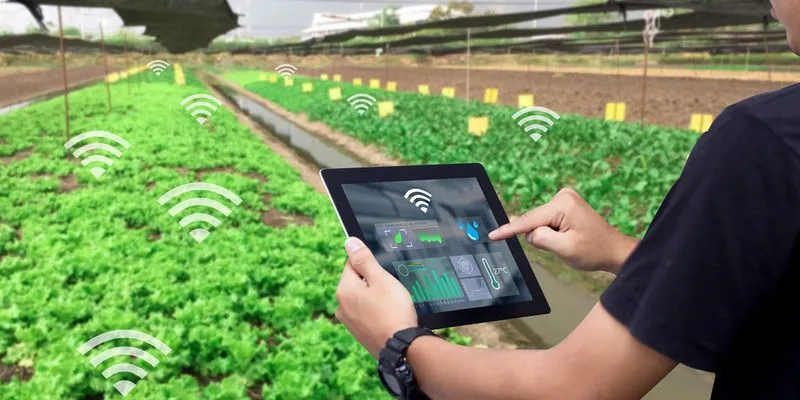In the crucible of global challenges, climate volatility, food insecurity, and ecological disruption, agriculture stands at a profound crossroads. The systems that have fed humanity for generations are straining under unprecedented pressures, yet within this complexity lies an extraordinary human capacity for reimagination. Our agricultural future is not a story of inevitable decline but radical innovation. As technologies converge and human ingenuity accelerates, we are witnessing the emergence of solutions that can simultaneously address productivity, sustainability, and resilience—transforming existential threats into opportunities for systemic reinvention.
However, if I were to highlight some of the most exciting spaces as an investor, I would pick the following areas.
Financing as a great equaliser
The most significant breakthrough in 2025 has been the democratisation of agricultural technology through innovative financing models. Recognising that financial barriers have historically prevented grassroots adoption of transformative technologies, we've witnessed the emergence of hybrid financing mechanisms that bridge traditional lending gaps. Fintech platforms are developing sophisticated credit scoring models that leverage satellite imagery, farm productivity data, and localised climate information. These platforms now provide microloans and equipment financing tailored specifically to small farmers, dramatically reducing the risk for investors and agricultural entrepreneurs.
Public-private partnerships have been instrumental in this transformation, with state governments and financial institutions collaborating to create risk-sharing frameworks that make agricultural technology investments more accessible.

Climate adaptation as core investment thesis
Climate is no longer a peripheral consideration but the central lens through which we evaluate agricultural innovations. In 2025, we're seeing a fundamental reimagining of agritech advancements that prioritise climate resilience alongside productivity.
Precision agriculture technologies have evolved from efficiency tools to comprehensive climate adaptation systems. Innovations now integrate real-time climate modelling, predictive crop stress analysis, and adaptive irrigation systems that respond dynamically to changing environmental conditions. Machine learning algorithms can now predict localised climate impacts with unprecedented accuracy, enabling farmers to make proactive decisions about crop selection, planting times, and resource allocation.
The emerging high-value circular economy
Historically, agricultural waste in India followed a predictable, low-value trajectory. Crop residues, food processing byproducts, and organic waste were primarily channelled into traditional, low-margin applications: animal feed for cattle, rudimentary biofuels, and basic bio-fertilizers. While seemingly practical, these applications offered minimal commercial incentives for supply chain participants.
However, the past few years have witnessed a remarkable paradigm shift. Emerging technologies and innovative startups are unlocking high-value applications for agricultural and food waste that span multiple industries—packaging, biomaterials, textiles, and beyond. It isn't just an incremental change; it's a fundamental reimagining of waste as a strategic resource. Unlike previous low-margin utilisation strategies, these innovations represent a quantum leap in value creation. They require substantial investment in research and development, creating a dynamic ecosystem of continuous technological improvement and value generation.
The business models evolving in this space are inherently more sustainable, with substantially higher margins that make long-term investment attractive.
Convergence and interdisciplinary innovation
One of the most exciting trends in 2025 is the increasing convergence of agricultural technology with adjacent sectors. We're observing breakthrough innovations that emerge from the intersection of agriculture, biotechnology, materials science, and digital technologies.
For instance, emerging biomaterials developed for agricultural applications are also used in the packaging, construction, and pharmaceutical industries today. Microbiome engineering techniques, originally for soil health, are now being adapted for human health applications.
This cross-pollination of technologies creates new value streams and demonstrates the interconnected nature of modern innovation ecosystems.
Investment landscape and future outlook
For investors, the agritech sector in 2025 represents a complex but incredibly promising landscape.
Success will depend on understanding multidimensional value creation—not just financial returns but social impact, environmental sustainability, and technological potential. The most successful investment strategies will be those that can identify and support innovations with the potential to create systemic change rather than incremental improvements. This means looking beyond traditional agricultural technologies and understanding how food systems intersect with broader technological and societal transformations.
As we look ahead, one thing is clear: the future of agriculture is not about technology replacing human expertise but rather creating empowering tools that enhance human capability, resilience, and potential.
(Mark Kahn is Managing Partner of Omnivore, which funds entrepreneurs building the future of agriculture and food systems.)
Edited by Kanishk Singh
(Disclaimer: The views and opinions expressed in this article are those of the author and do not necessarily reflect the views of YourStory.)








